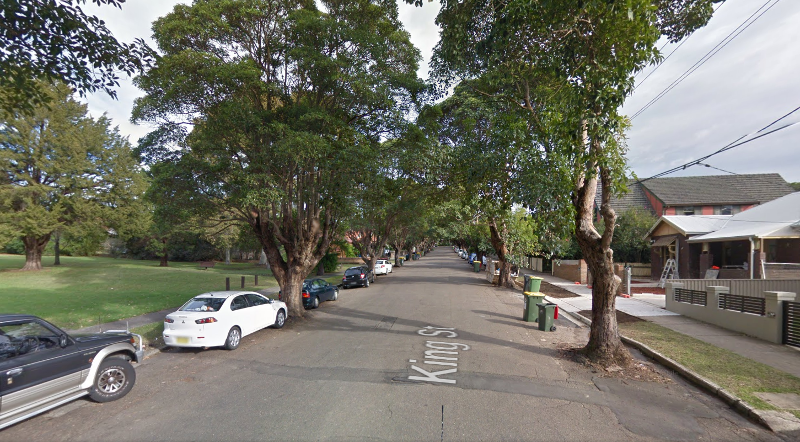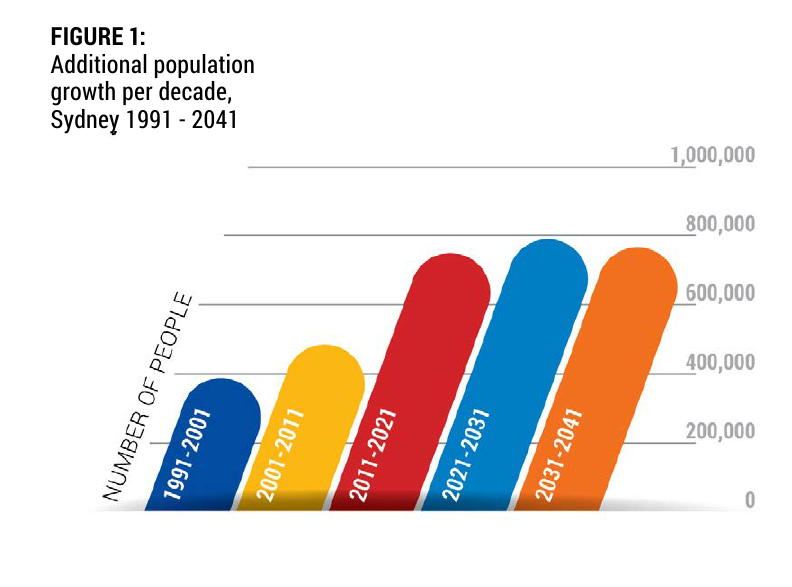

| Action for Public Transport (N.S.W.) Inc. |
| P O Box K606 |
| Haymarket NSW 1240 |
| 31 March 2017 |
Action for Public Transport (NSW) is a transport advocacy group, which has been active in Sydney since 1974. We promote the interests of beneficiaries of public transport; both passengers, and the wider community. We make the following submission on the draft Plan.
Our submission focuses on the draft amendment to A Plan for Growing Sydney proposed by the GSC. The comments we make below are relevant to the individual district plans, but particularly those that involve land releases in areas currently lacking frequent and direct rail services to either Parramatta or Sydney Central (the established CBD and its immediate surrounds).
A people-centred approach
Towards our Greater Sydney 2056 (p.10) suggests that the GSC "will incorporate liveability considerations into every level of planning for Greater Sydney as part of a people centred approach". This sounds like an excellent idea. Walkable environments and liveable environments go hand in hand if, indeed, they are not the same thing.
Public transport trips invariably involve some walking. Walkable environments support public transport usage, and vice versa.
In a recent interview with Wendy Harmer, Chief Commissioner Lucy Turnbull commented on the role of tree cover in moderating uncomfortably high temperatures. This is a real issue for pedestrians and public transport passengers waiting at stops. APTNSW suggests that the conflict between overhead powerlines and street trees should be resolved by putting powerlines underground, rather than by continuing to allow utility providers to grossly disfigure street trees.
Where whole streets are being redeveloped to higher densities, this should be an absolute expectation of the developer. Smaller developments should be required to contribute to a fund, which in time will see overhead powerlines moved underground.
There is also the opportunity to calm traffic in residential streets and potentially on proposed pedestrian boulevards like Parramatta Road (west of Strathfield) by using part of the carriageway for street tree planting. Below is a photograph of King St Enfield, showing the dramatic impact this approach has on the pedestrian environment. We recommend it to the Commission.

Strategic Centres
We concur with the Commission’s emphasis on the importance of strategic centres with a range of higher order "knowledge jobs". The more accessible these centres are by high frequency public transport, the more these jobs will be available on an equitable basis to anyone with the right skills. Conversely, the pool of available workers becomes deeper, benefiting businesses and the economy.
Parramatta does not yet have the superior level of public transport accessibility to support its development as a "strategic centre". APTNSW believes that the "missing link" between Carlingford Railway station and Epping Station (via Carlingford Court shopping centre) must be filled as a matter of urgency, either by light rail or by extension of the metro system. This would (at long last) link Macquarie Park with Parramatta.
Western Sydney Airport
APTNSW agrees with the assessment of the GSC that the Western Sydney Airport will be a "game-changer". It is imperative that the airport be serviced by rail from the day it opens. Otherwise, it is difficult to see how passengers and workers will be able to access the new airport without creating catastrophic levels of traffic congestion.
We note and concur with the GSC's view (Towards our Greater Sydney 2056, p.3) that "we need to plan now for a sustainable supporting transport network" for the Western Sydney Airport, and the Greater Parramatta and Olympic Precinct. It is extremely disappointing that the Federal Government's $2.9 billion "Western Sydney Infrastructure Plan" is in fact a package of road projects with no public transport component whatsoever. See https://infrastructure.gov.au/infrastructure/western_sydney/.
Missing links
The sustainable supporting transport network envisaged by the GSC can be accelerated by building on the system we already have, and filling in the many missing links in the system. We have commented on these missing links in our submission on the Sydney Rail Scoping Study, http://www.aptnsw.org.au/documents/w_syd_rail_scoping1.html.
Population projections
It is evident that the GSC is constrained by the population projections contained in A Plan for Growing Sydney. Towards our Greater Sydney 2056 (p.11) states that "The population of Greater Sydney is forecast to increase by 1.74 million people in the 20 years to 2036, and could be as high as eight million people by 2056." The fundamental imperative of each of the district plans is to accommodate the projected population, within the boundaries of Greater Sydney (stretching from the Blue Mountains to Wollondilly).
We appreciate that this is the charter given to the Commission by its Minister. We also appreciate that the Commission intends to advocate for effective infrastructure to keep pace with population growth. Indeed, it has no doubt done so in its regular liaison with Transport NSW and NSW Treasury.
Nonetheless, new public transport infrastructure has long lead times, and it is unsound to proceed on the assumption that public transport infrastructure provision will keep pace with such a rapid rate of population growth.
Good public transport services need to be in place on the day new residents begin to move in, so that travel patterns can develop around public transport. This has been achieved in the case of the Leppington line, but we know from bitter experience that this rarely happens.
The likely outcome in practice, we fear, will be car-dependent urban sprawl with increasing levels of traffic congestion and environmental damage. We have been here before, and it is a pattern that should not be repeated.
The bigger picture
APTNSW believes there is a need for a deeper re-think of A Plan for Growing Sydney. It is apparent that Sydney is struggling with the "step change" in population growth noted by the Commission and illustrated in figure 1 of that Plan (reproduced below).

One possibility is of course to adjust immigration levels to match the realistic capacity of agencies to deliver the necessary infrastructure. This is a decision within the control of the Federal Government rather than State governments. It is not impossible to retrofit the city with a superb public transport system like that of Tokyo. That strategy could support a bigger population, because it does not entail the extravagant space demands and traffic congestion induced by road building "solutions". This is well worth considering, but it will take time.
Another possibility is to acknowledge the existence of a several large regional cities, some of which already have in place urban infrastructure capable of accommodating bigger populations. With faster rail, Newcastle and Wollongong can and should come close to the "30-minute city" advocated by the GSC. The Commission is, we believe, on the right track in its focus on time rather than on distance.
It may not be possible for regional cities such as Bathurst and Orange to meet the ideal 30-minute criterion for access to higher order jobs. It is evident though from the success of the (lamentably infrequent) Bathurst flyer that with faster and more frequent rail services, commuting times can be comparable to those experienced by the residents of outer suburbs of Sydney.
While it may not immediately spring to mind, Canberra is also a regional city with considerable spare capacity. High-speed rail could bring Sydney and Canberra (via the Southern Highlands) effectively closer together. We anticipate the usual objection to high-speed rail on the grounds of its cost, which is indeed significant. The cost of extending urban development to greenfields sites on the semi-rural periphery, and providing infrastructure and services comparable to those available in established areas, is however never acknowledged.
Conclusion
APTNSW welcomes and supports the GSC’s commitment to liveability and its intention to pursue a people-centred approach. Liveable, walkable environments are supportive of the needs of users of public transport. Conversely, high public transport usage supports liveable, walkable environments.
We are concerned that the intense pressure to add to the supply of housing, quickly, will overwhelm the GSC's strategy.
We believe that there are alternatives to continued urban fringe expansion that should be explored. They involve increasing the availability, speed and frequency of public transport services, filling in the many missing links in Sydney's rail system, and utilising fast rail to make full use of the existing capacity of regional cities.
Thank you for the opportunity to comment.